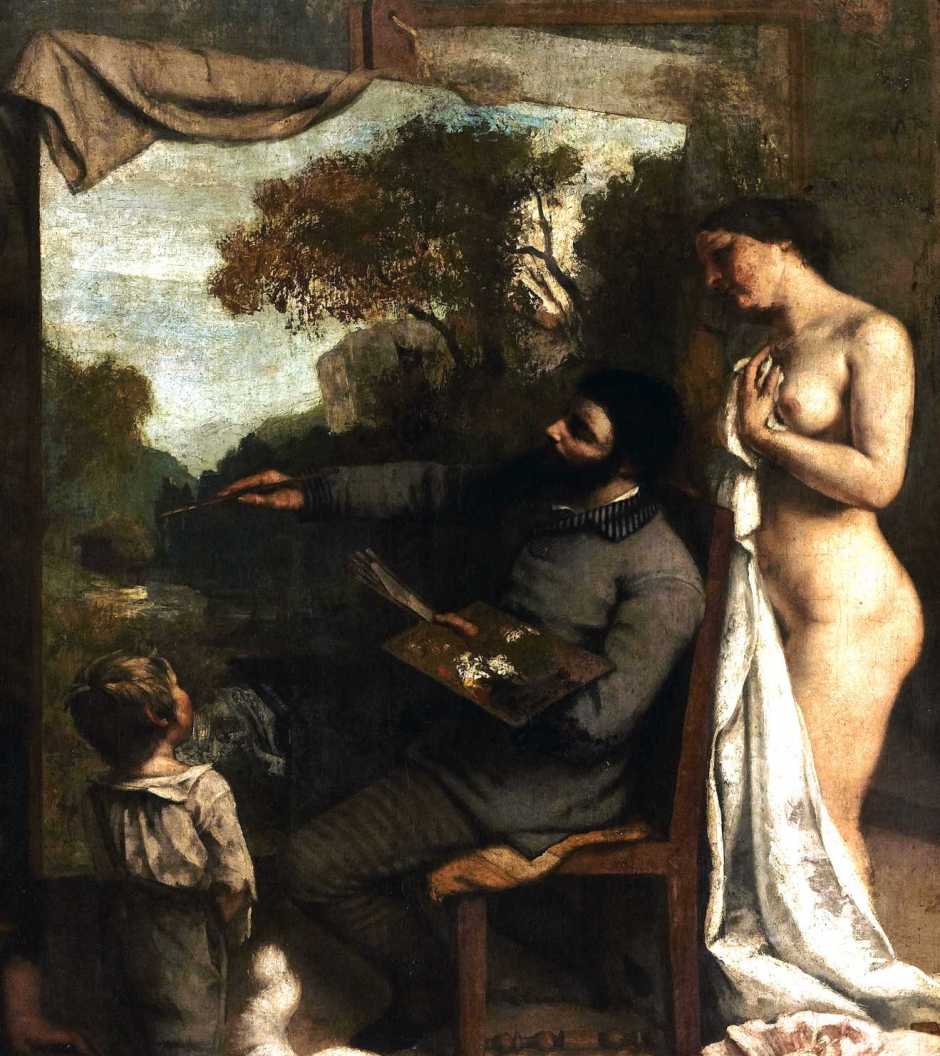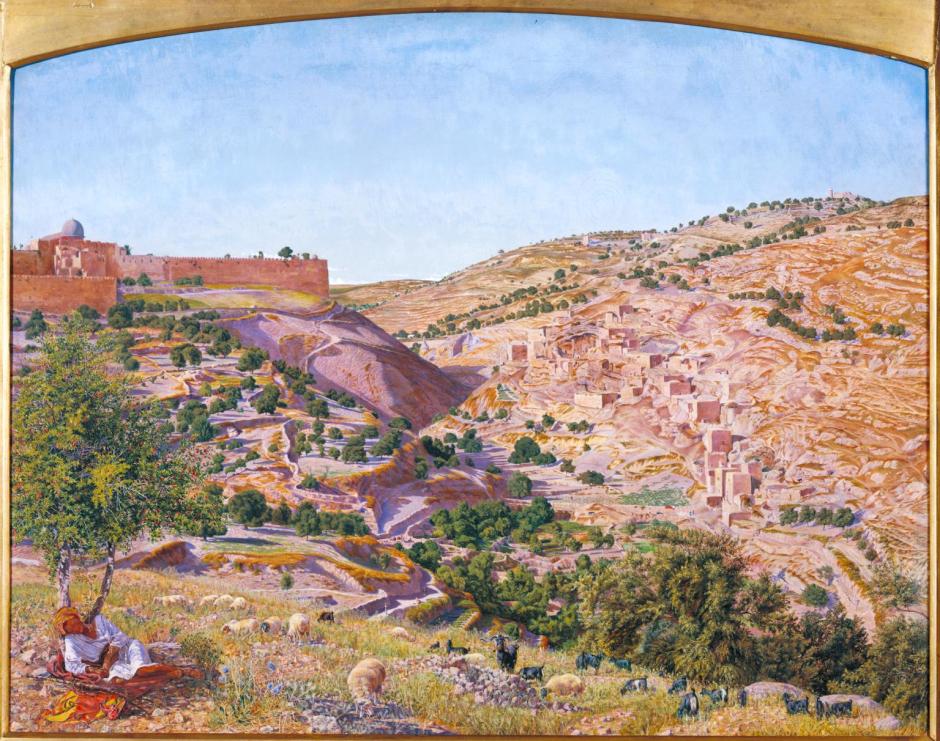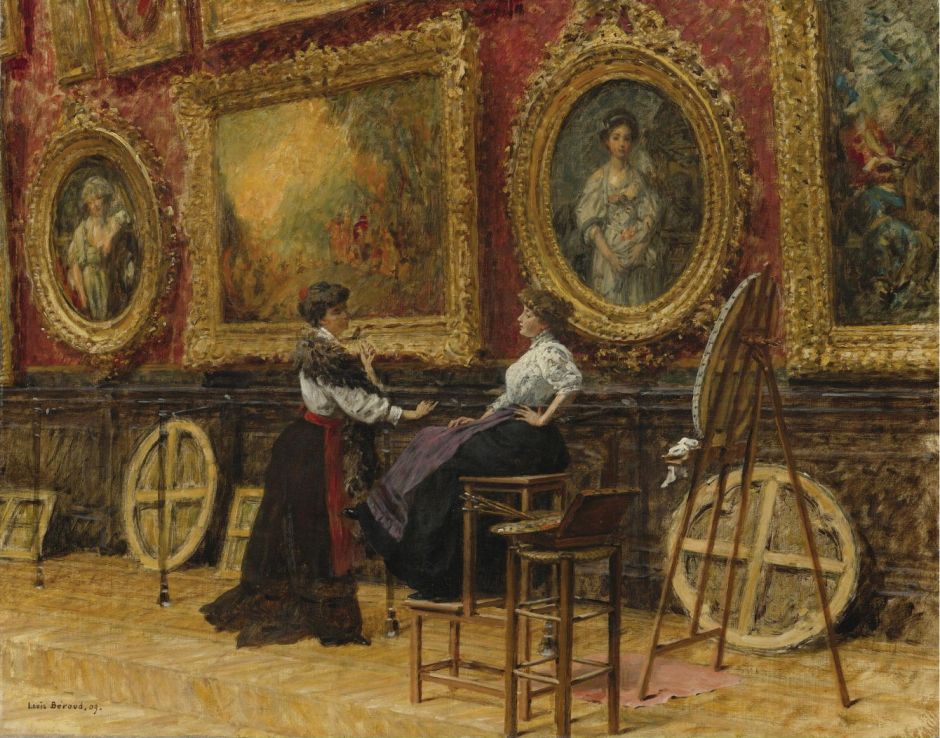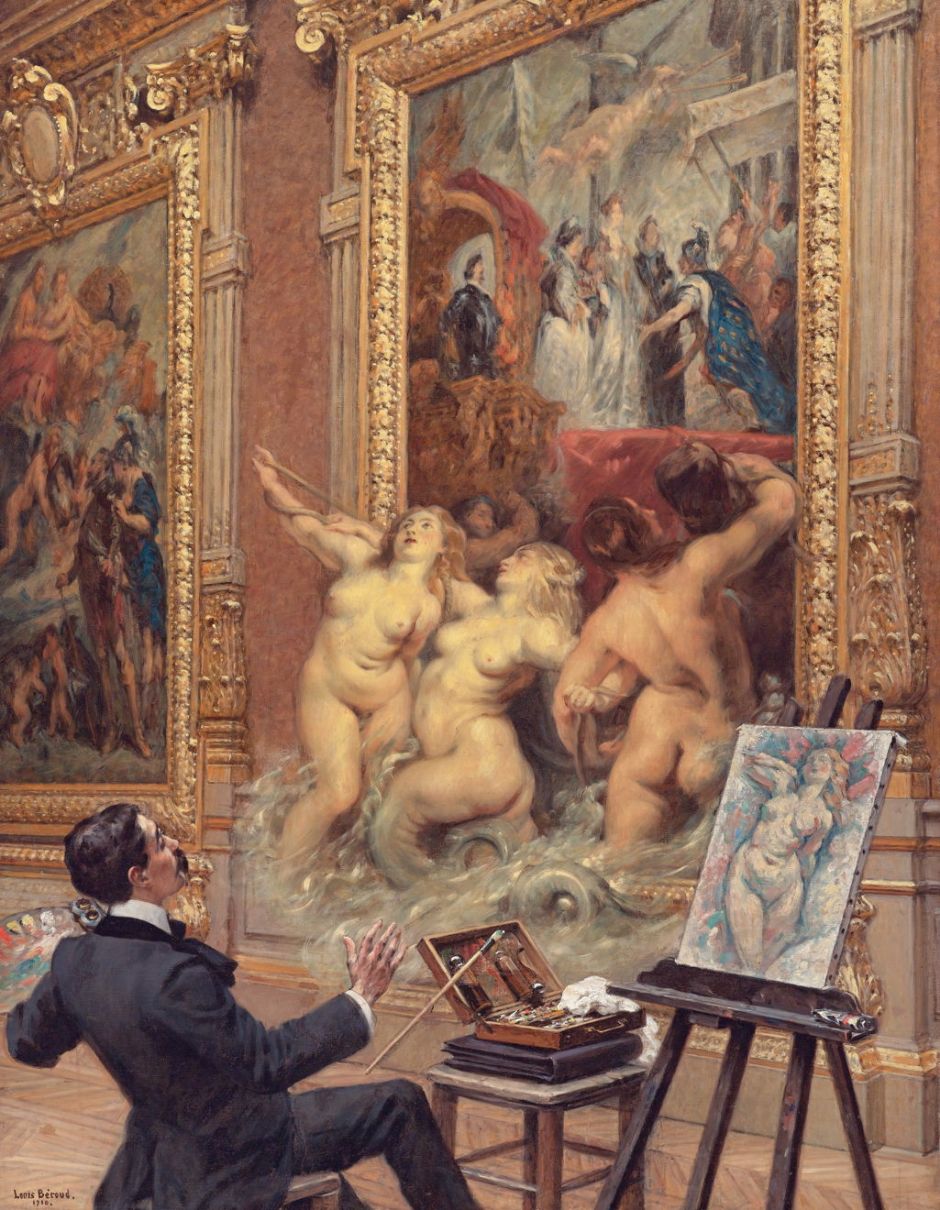In yesterday’s look at embedded landscapes, I showed one of the series of the five senses painted by Jan Brueghel the Elder and Peter Paul Rubens, for its distant landscape. This article moves on to consider how paintings within a painting can help tell its story, or mystify the viewer, and starts with another from that same series, Sight (1617).

Among the cornucopia of visual and optical artefacts shown here is a vast collection of visual art, including paintings and sculpture. Although there are peacocks with their eye-like markings outside (just above the woman’s head), it’s surprising that none of the paintings shown have any particular relevance to the subject, such as referring to the myth of Argus.
Less straightforward is the embedded image of a tapestry in Diego Velázquez’ famous Spinners, or Las Hilanderas, from about 1644-48.



At the time that Rubens made that copy, he and Velázquez were together at the royal court in Madrid, but Rubens is believed to have taken his copy back to Antwerp with him in 1629. Velázquez therefore most probably only had access to Titian’s original when he was painting Las Hilanderas.
Since the early twentieth century, commentators have been trying to construct a reading of Las Hilanderas that makes any sense. I’m not convinced that we’re getting any closer.
Another enigmatic use of embedded images is in David Bailly’s Self-Portrait with Vanitas Symbols from 1651.

This contains multiple portraits referring to the past. The figure shows the artist as a younger man, holding the maulstick he used in painting. His actual self-portrait at the time is in the painting he is holding with his left hand. Next to that is a painting of his wife, who had already died, and a ghostly image of her is projected onto the wall behind the wine glass.
Gathered in front of the artist are ephemera and other signs of Vanitas: the snuffed-out candle, a glass of wine, flowers, and soap bubbles, together with a string of pearls and a skull. If that message isn’t clear enough, he provides the quotation on a piece of paper: vanitas vanitum et omnia vanitas, “vanity of vanities, and all is vanity”, together with his signature and date.
Some artists have used embedded paintings to add biting satire to the story they’re telling. Perhaps the best examples of this are in the narrative series of William Hogarth.

The fourth in his Marriage A-la-Mode series, The Toilette, shows the couple after they have inherited the late Earl’s title, and are now the Earl and Countess Squander. She’s being entertained while completing her dressing and preparations for the day. To the right of the Countess, her lover Silvertongue rests at ease, his feet uncouthly laid on the sofa. At the left an Italian castrato is singing to a flute accompaniment.
Hogarth’s selection of paintings for this scene is revealing and satirical. Above the castrato is the Rape of Ganymede, and above that a portrait of Silvertongue. Above the Countess is Io in ecstatic embrace with Jupiter, and Lot’s daughters getting their father drunk so that he can inseminate them both.
Another famously inscrutable painting within a painting is Gustave Courbet’s huge Painter’s Studio from 1855, whose full title goes on to ‘explain’ it as a Real Allegory of a Seven Year Phase in my Artistic (and Moral) Life.
This was painted in just six weeks, largely as a political statement and protest, for submission to the 1855 Paris World Fair., whose jury refused it. Courbet therefore set up his rival exhibition close to the site of the World Fair, in an act of self-promotion which was also a precedent to later Salons des Refusés for the Impressionists.

The figures in the painting show individuals who had influence over Courbet’s life and artistic career. The painting’s centre point is a canvas, on which Courbet himself is at work. The nude model beside him might appear contradictory, given that the work in progress is clearly a landscape. This has been interpreted as indicating how Courbet has shunned the academic art tradition for the new and increasingly popular genre of the landscape.

Courbet shows considerable detail in the painting within the painting, making it clear that it’s a landscape set in the countryside around his home town of Ornans. This makes obvious reference to his origins and where he considers is still his home.
Although Georges Seurat isn’t known for his enigmatic themes, his only known painting of female nudes, Poseuses (Models or Posers) from 1886-8, isn’t an easy read.

The three nudes must be three different views of the same model posing in front of some of his landscape paintings. These have recently been analysed in depth by Michelle Foa. The painting on the left wall is clearly Seurat’s monumental work La Grande Jatte (1884-6), posing many questions and offering a multitude of readings. Given that Poseuses dates consecutively with that painting, it’s feasible that the painting was still in Seurat’s studio when he started Poseuses in 1886.

The four paintings on the far wall are shown less distinctly and are harder to identify. The pair on the left are most probably two from Seurat’s series of works depicting ports on the north coast of France, as might be that on the right. The largest in the centre appears to be a portrait. Unfortunately none seems to match in form other paintings completed by Seurat prior to 1888.
Foa argues that Poseuses is “an extended and sophisticated exposition of the physiological grounds of vision”. In that La Grande Jatte contrasts with Poseuses in its deep spatial effect, against which the illegible flatness of these four smaller paintings makes further contrast. She thus considers that, in showing one deep painting within the whole painting of Poseuses, Seurat is able to make that comparison, as a quotation perhaps.
Use of a picture within a picture as a simple quotation isn’t that uncommon. My next example is Ford Madox Brown’s telling of The Coat of Many Colours from 1864-66.

Brown packs the many figures from this Old Testament story into his image, which is set against an embedded landscape based on Thomas Seddon’s paintings made in front of the motif in Palestine, such as his Jerusalem and the Valley of Jehoshaphat from the Hill of Evil Counsel (1854–5), shown below. This is not only an appropriate context, but a tribute to his fellow Pre-Raphaelite who tragically died in Cairo of dysentery in 1856.


Louis Béroud became almost obsessed with painting copyists in the Louvre against a background of his favourite paintings there. The discussion in his Copyists in the Louvre (1909) is taking place in front of Watteau’s Embarkation for Cythera (1717); to the left is Greuze’s The Milkmaid (1780), and to the right his Broken Pitcher (1785).

In The Joys of the Flood (in the Medici Gallery) (1910) the copyist is the artist himself, the only man to appear in that role in these works. Rubens’ huge The Disembarkation of Marie de’ Medici at Marseilles (1621-25) bursts into life, as its water starts to flood the Louvre and its three nudes step out onto the floor.

This took a more sinister turn in 1911, when Béroud turned his attention to Leonardo da Vinci’s masterpiece, in The Mona Lisa in the Louvre. The copyist is missing, though, as if to symbolise the disappearance of the painting when it was stolen in August 1911.

Douglas Fox Pitt’s The Stafford Gallery from 1912 is an unusual watercolour with its elevated view recalling Spencer Gore’s Gauguins and Connoisseurs painted the previous year. While Gore’s painting (no image of which is in the public domain) shows a landmark exhibition of Post-Impressionist paintings in the same gallery, Fox Pitt shows an early exhibition of the Scottish Colourist J D Fergusson held from 9 March 1912. The painting shown most prominently is Fergusson’s La Dame aux Oranges (c 1908–09), whose location is now unknown. To the left is The Red Shawl (1908), and on the right is Le Manteau Chinois (1909).

One of Fox Pitt’s domestic interiors, his Interior with Maid from about 1913, shows other significant contemporary paintings. Above the fireplace is Harold Gilman’s Norwegian Street Scene (Kirkegaten, Flekkerfjord) (1913), and above the bright cushion is Charles Ginner’s The Wet Street, Dieppe (1911). It’s thought that the sofa throw came from the Omega Workshops, established by Roger Fry, Duncan Grant and Vanessa Bell, making it a truly avant garde interior for the time.
Late in the life of Eleanor Fortescue-Brickdale, when her eyesight was starting to deteriorate, she painted one of Botticelli’s works together with a locational cameo landscape in Renaissance tradition.

The title of this painting by Eleanor Fortescue-Brickdale reveals its key figures: Botticelli’s studio: The first visit of Simonetta presented by Giulio and Lorenzo de Medici (1922). Behind Botticelli, Giuliano de’ Medici, Simonetta Vespucci, Lorenzo de’ Medici, Giovanna Tornabuoni and her attendants is an embedded view of the Palazzo Vecchio in the centre of Florence. The painting shown in progress is Botticelli’s Madonna of the Magnificat, believed to have been completed in 1483.
My final enigmatic reading is a physical and visual composite painted by Eric Ravilious in 1940, his Train Landscape.

Ravilious had intended producing a book showing the many chalk figures found on the Downs in the south of England. This takes the form of a triptych, harking back to van Eyck’s Rolin Madonna, showing another White Horse, this time near Westbury in Wiltshire.
Conservation work on this painting has shown that it’s a composite, assembled using collage, of two different views painted from compartments in trains. One, originally showing the Wilmington Giant, provides the train interior, the other shows the Westbury White Horse as seen through the windows.
For Ravilious these composite paintings of train interiors and landscape triptychs were quite different in intent from their ancestors. The railway carriage was much more than a framing device, and the landscape much more than a means to add depth to the interior. This type of travelogue motif was popular at the time, as a means of promoting travel to see places, and it’s likely that would have been an important theme had Ravilious lived long enough to complete his book.

